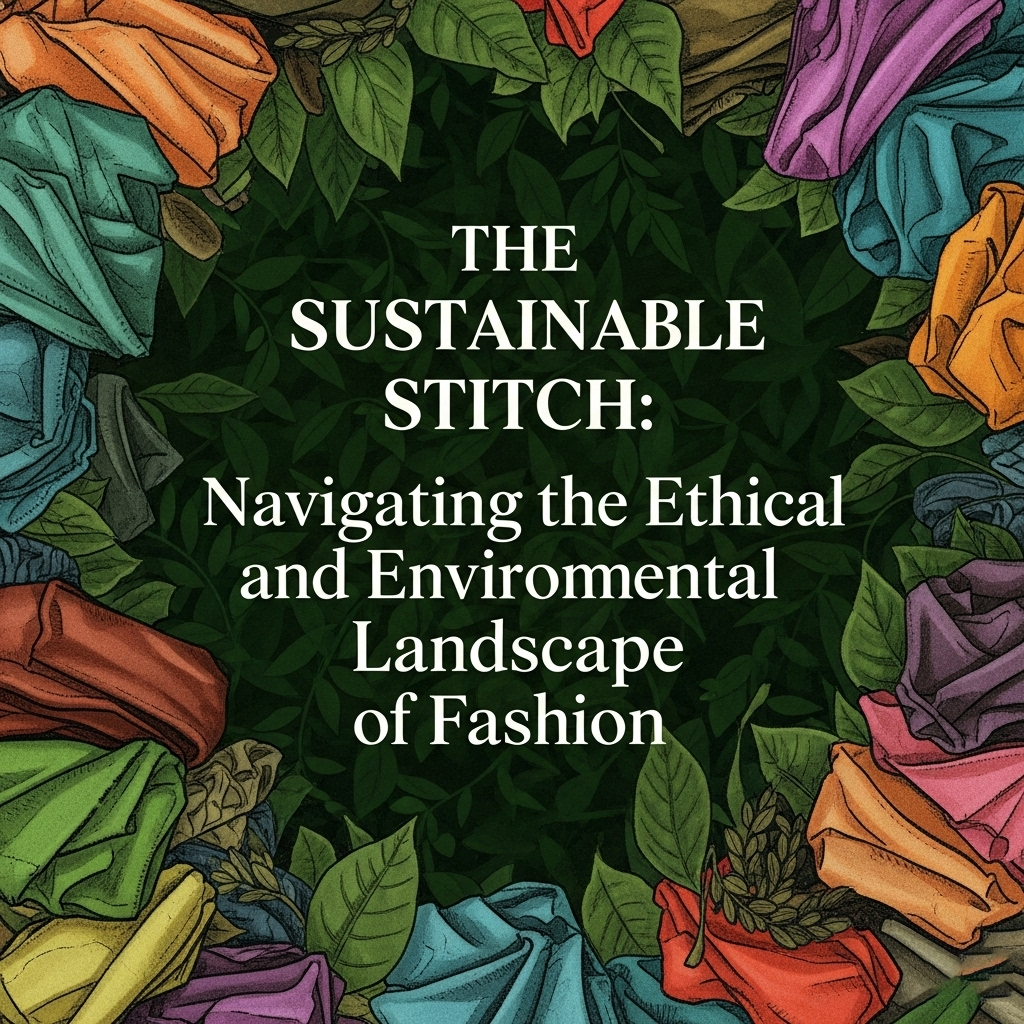Blog
The Sustainable Stitch: Navigating the Ethical and Environmental Landscape of Fashion

The glittering facade of the fashion industry often conceals a darker truth: it is one of the planet’s most polluting and resource-intensive sectors. From vast landfills overflowing with discarded clothing to garment workers toiling in unsafe conditions, the true cost of our ever-expanding wardrobes is becoming increasingly undeniable. However, a powerful counter-movement is gaining momentum – sustainable fashion. This isn’t just a trend; it’s a critical shift towards a more ethical and environmentally responsible approach to how we design, produce, consume, and dispose of our clothes. Navigating this landscape requires understanding its challenges, celebrating its innovations, and recognizing the pivotal role of conscious consumerism.
At the heart of the problem lies fast fashion. This business model, popularized in the late 20th century, thrives on rapid production cycles, low costs, and a constant influx of new trends, encouraging consumers to buy more and discard quickly. The environmental impact is staggering: textile production is a major contributor to greenhouse gas emissions, water pollution (from dyeing and finishing processes), and microplastic shedding from synthetic fabrics. The sheer volume of waste is overwhelming, with millions of tons of textiles ending up in landfills annually, where they can take hundreds of years to decompose. Beyond the environment, fast fashion often comes at a steep human cost. The drive for cheap labor pushes factories in developing countries to offer notoriously low wages, unsafe working conditions, and exploitative practices, raising serious ethical concerns about human rights.
Defining sustainable fashion is complex, as it encompasses a broad spectrum of practices aimed at minimizing negative impacts. It’s about more than just “eco-friendly” materials; it includes the entire lifecycle of a garment. Key aspects include:
- Eco-friendly materials: Prioritizing materials like organic cotton (grown without harmful pesticides), recycled polyester (made from plastic bottles or old garments), Tencel/Lyocell (derived from sustainably managed wood pulp with a closed-loop system), hemp, and innovative alternatives like Mylo (mushroom leather) or Piñatex (pineapple leaf fiber).
- Ethical labor practices: Ensuring fair wages, safe working conditions, and respect for human rights throughout the supply chain. This means transparency, allowing consumers to see where and how their clothes are made.
- Circular economy models: Moving away from the linear “take-make-dispose” model towards systems where products and materials are kept in use for as long as possible. This involves designing for durability, repairability, and recyclability.
- Reduced consumption: Encouraging consumers to buy less, choose higher quality, and extend the lifespan of their existing clothes.
The industry is seeing remarkable innovations in textile technology that are paving the way for a greener future. Scientists are developing new dyeing processes that drastically reduce water usage and chemical runoff. Companies are exploring bio-based materials that are fully biodegradable or even compostable. From fabrics that self-repair to those that can capture carbon, the frontier of sustainable textile innovation is constantly expanding, offering hope for radically cleaner production.
Circular fashion models are gaining traction as practical solutions to waste. Upcycling transforms discarded materials into new products, giving them a higher value than their original state. Recycling programs collect old garments to be broken down and spun into new fibers, though this process is still challenging for mixed-material textiles. Rental services offer a sustainable alternative for occasion wear or for those who want to experiment with trends without committing to ownership. Platforms for resale and secondhand shopping (like Depop, Poshmark, or The RealReal) have exploded in popularity, giving clothes a second, third, or even fourth life, thereby reducing demand for new production. These models challenge the ingrained notion of disposability.
Transparency and traceability are becoming non-negotiable demands from both consumers and regulatory bodies. Brands are under increasing pressure to map their supply chains, from the farm where the fibers are grown to the factory where the garment is sewn. Technologies like blockchain are being explored to provide immutable records of a garment’s journey, allowing consumers to verify claims of ethical sourcing and environmental responsibility. This shift is crucial in combating greenwashing, where brands make misleading claims about their sustainability efforts without genuine commitment. Consumers are becoming more discerning, learning to look for certifications, detailed impact reports, and tangible actions rather than just buzzwords.
Consumer responsibility is a powerful lever for change. Every purchasing decision has an impact. Practical tips for a more sustainable wardrobe include:
- Buy less, choose well: Invest in high-quality, timeless pieces that will last.
- Repair and mend: Extend the life of your clothes by fixing minor damages.
- Wash smarter: Use cold water, full loads, and eco-friendly detergents to reduce energy and microplastic shedding.
- Donate or sell: Give unwanted clothes a second life rather than throwing them away.
- Thrift and buy secondhand: Embrace pre-loved items to reduce demand for new production.
- Support truly sustainable brands: Research companies committed to ethical and environmental practices.
While individual choices are important, policy and industry initiatives are vital for systemic change. Governments are beginning to implement regulations on textile waste, chemical usage, and labor conditions. Industry collaborations, like the Fashion Pact or the Sustainable Apparel Coalition, bring together major players to set collective goals and develop standardized metrics for sustainability. These large-scale efforts are essential to transforming the entire global supply chain.
In conclusion, the journey towards a truly sustainable fashion industry is complex and ongoing, but it is one that society increasingly demands. It requires a fundamental rethinking of our relationship with clothes, moving from a culture of consumption to one of care. By embracing innovation, demanding transparency, and making conscious choices, consumers, brands, and policymakers can collectively weave a future where fashion is not just beautiful, but also truly responsible, minimizing its footprint while maximizing its positive impact on people and planet. The sustainable stitch is not just about fabric; it’s about the future of our world.
